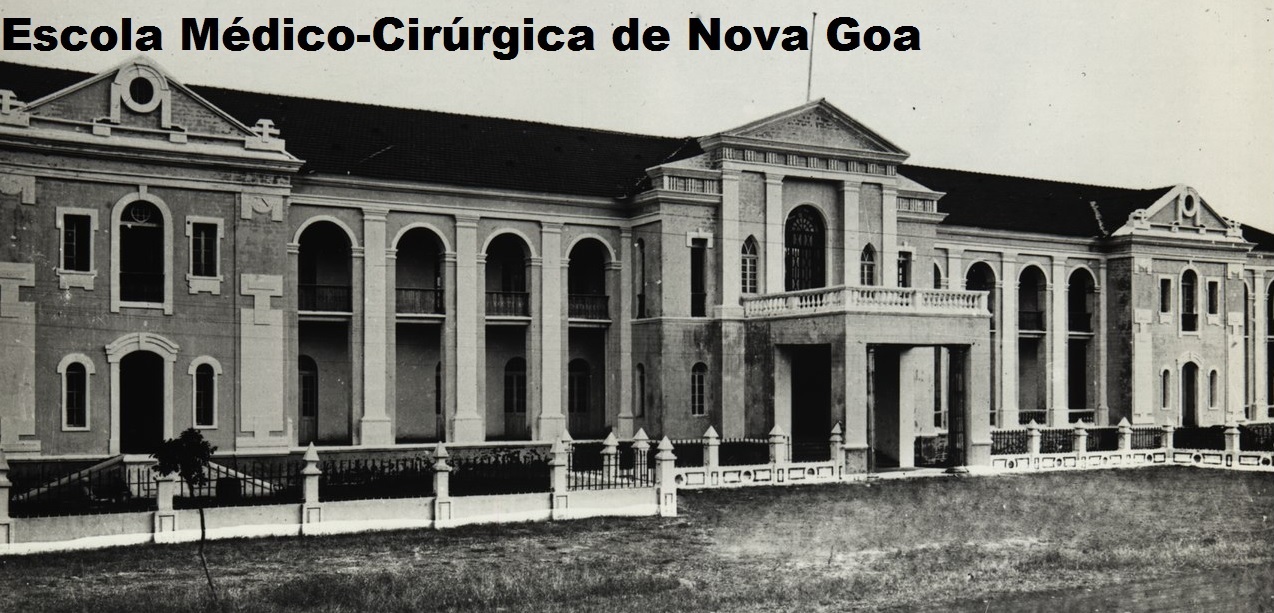
Before the Portuguese came to Goa, records of medical practices in Goa are limited, yet it is evident that a structured system of traditional medicine existed. In Goa’s predominantly Hindu society, the priestly class addressed spiritual needs, while Vaidyas tended to health and healing, drawing from Ayurvedic principles and other indigenous knowledge systems.
Following the Portuguese capture of the island of Ilhas on the feast of St. Catherine, 25 November 1510, Afonso de Albuquerque initiated a significant healthcare development by founding the Hospital Real do Espírito Santo (Royal Hospital of the Holy Spirit). Established near the chapel of St. Catherine in present-day Old Goa, the hospital began modestly but soon expanded in size and reputation. The Royal Hospital was not only a center of European medicine in Asia but also a symbol of the fusion of Western and local healing practices, proudly supported and promoted by successive viceroys and the Portuguese crown.
Western medical education was first introduced in Goa around 1546, offered to both the Portuguese settlers and the native Indian population. However, by the late 17th and early 18th centuries, the Hospital Real do Espírito Santo had declined significantly. With no qualified physicians on staff, formal medical instruction came to a standstill. Despite sporadic revival attempts, a major step in medical education came in 1842 with the founding of the Escola Médico-Cirúrgica de Nova Goa, following the transfer of the Hospital Militar to Panjim. Initially located in Panelim, Old Goa, and housed in a former Franciscan Convent, it became one of Asia’s earliest modern medical colleges and the first to offer formal allopathic training in the region.
The origins of the medical college in Goa trace back to as early as 1691, when the Portuguese authorities recognized the urgent need to train local manpower in medicine to reinforce their dwindling medical corps. This need became especially pressing as Old Goa, then the colonial capital, had become a breeding ground for disease. Repeated outbreaks of epidemics had severely reduced the population, prompting Viceroy Count of Alvor, D. Francisco de Távora, to famously refer to Old Goa as the graveyard of the Portuguese.
In an effort to stem the rising death toll, Viceroy D. Cristóvão de Sousa Coutinho appealed in 1687 to Portugal’s Secretary of State for Overseas Affairs, recommending the dispatch of medical instructors. This early appeal highlighted both the dire health conditions and the potential seen in Goan natives to be trained in Western medicine—planting the seeds for what would eventually become one of Asia’s first modern medical colleges.
To address the health crisis in colonial Goa, the Portuguese government appointed two professors from Coimbra University to treat patients and train locals in medicine. In 1759, the government took over the hospital in Panelim, and by 1801, a three-year Medicine and Surgery Course was introduced, led by Coimbra graduate Dr. António José de Miranda e Almeida. The course ran until 1815, ending with his departure. Recognizing the need for a modern institution, the school was moved to the Palácio dos Maquineses in Panaji, and on December 1, 1842, the Escola Médico-Cirúrgica de Nova Goa was formally inaugurated, offering courses in medicine and pharmacy.
Admission to the medical school required candidates to be over 16 and well-versed in Latin, grammar, philosophy, and drawing. The Portuguese emphasized humanities before medicine, with students needing to pass first-year mathematics. Starting with just 8 students, the school gained prominence in the Portuguese-speaking world. Over time, the Escola Médico-Cirúrgica de Nova Goa produced around 1,327 doctors and 469 pharmacists. Its alumni held prestigious positions, including chief doctors in Bombay, physicians at the Court of Pune, and medics in Sawantwadi and other Portuguese colonies.
In 1902, the Portuguese government considered closing the Escola Médico-Cirúrgica de Nova Goa due to its perceived lack of European standards. However, renowned physician Dr. Miguel Bombarda defended the Escola in parliament, successfully preventing its closure. Internships were introduced in 1927, and in April 1946, the school gained autonomy with its first independent director, the Goan physician Dr. Miguel Caetano Dias.
Renamed Goa Medical College in 1963, it became central to healthcare and medical training. Panaji and Ribandar Hospital—opened on 13 December 1967 as an extension—were noted for their fine architecture and cleanliness.
Medical Publications
In the Portuguese era, Goa made significant contributions to medical literature. One of the earliest examples was the Archivo de Pharmacia e Science Accessories da India Portuguesa, a monthly pharmacy journal launched in 1860. Edited by António Gomes Roberto, Professor of Pharmacy at the Escola Médico-Cirúrgica de Nova Goa, it featured valuable insights on medicinal plants and minerals. However, the journal ceased publication in 1871.
Another monthly journal, Archivo Médico da India, launched in July 1894 by Pantaleão Ferrao of Bastora, covered medicine, pharmacy, and local medicinal plants. This journal continued until May 1896. Together, these publications reflect the intellectual and scientific activity of Goa’s medical community under Portuguese rule and their interest in integrating traditional knowledge with Western science.
Then came the Archivos Indo-Portugueses de Medicina e Historia Natural published between 1921 and 1926. It was later revived in June 1927 as the Arquivos da Escola Médico-Cirúrgica de Nova Goa, and continued for several years across Portugal’s remaining Indian colonies until 1961. The journal featured articles in Portuguese, French, and English, with some Portuguese and French papers including English summaries.